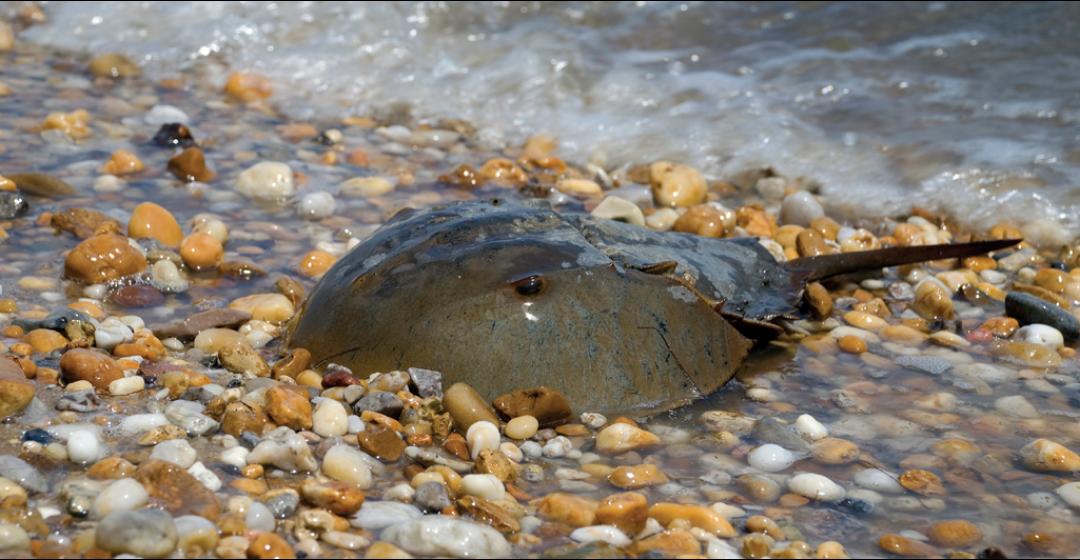In the summer, volunteers on the Vineyard visit beaches under the light of a full (or darkness of a new) moon to count horseshoe crabs as they come ashore to spawn.
Horseshoe crabs – an ancient species with a mating ritual attuned to the tides – are harvested for use as bait for conch fishing, and because their blood has biomedical value. But the census counts could soon take on more urgency, with a new study showing that crabs that survive a blood donation might be impacted in other ways.
The Atlantic horseshoe crab is actually an arthropod, closely related to spiders. They have a large, domed carapace, a long spine that looks like a tail, several pairs of eyes, and five pairs of walking legs. Horseshoe crab shells are often found on Vineyard beaches; they molt sixteen to seventeen times over their lifespan, which can be more than twenty years.
Their mating cycle is attuned to the tides, and therefore the lunar cycle. The horseshoe crab arrives on the beach to spawn during the high tides that come with the new and full moons, when the water is the highest on the beach. The male uses pinchers on his underside to grab the female; she drags him up the beach, where she makes a small nest and lays eggs before moving forward to have the male fertilize them. The process is repeated several times and can result in thousands of eggs.
Experts say horseshoe crabs have been around for at least 350 million years, with the species surviving mass extinctions. But a scientific discovery that came in the last sixty years poses a new threat.
In the late 1950s, a scientist at the Marine Biological Laboratory discovered that the crab’s milky-blue blood has unique properties; a scientist at Woods Hole Oceanographic Institute later discovered a way to use horseshoe crab blood to test for pathogens. A clotting agent in the blood is used to create a test that binds to bacteria and other contaminants at less than one part per trillion. Today, large quantities of horseshoe crabs are caught and about 30 percent of their blood is harvested to be used by the pharmaceutical and medical industry to test drugs, vaccines, and medical devices for contamination. Every drug certified by the FDA, as well as surgical implants and prosthetics, is tested using the blood compound.
Seventy to 90 percent of the crabs survive the blood-collecting procedure and are returned to the water. But according to a new study by Plymouth State University and the University of New Hampshire, there could be other harmful repercussions to the crabs that survive the procedure.
According to the study “Sublethal Behavioral and Physiological Effects of the Biomedical Bleeding Process on the American Horseshoe Crab,” the blood from more than fifty thousand animals is harvested every year. The authors note that there are fewer female horseshoe crabs in heavily harvested areas, suggesting that harvesting the blood may not be harmless after all.
The study looked at twenty-eight female crabs. About 18 percent died after bleeding. By studying the animals’ behavior after the blood harvesting, the authors found that the crabs had changes in their activity levels and behavioral rhythms, and a reduction in hemocyanin levels, which could affect their immune systems.
“These previously unrecognized behavioral and physiological deficits suggest that the harvest of [horseshoe crab blood] may decrease female fitness, and thus may contribute to the current population decline,” according to a summary of the study.
The state is already taking some steps toward horseshoe crab conservation. Over the last several years, the Massachusetts Division of Marine Fisheries has closed the commercial horseshoe crab fishery for five-day lunar periods in late April, May, and June. The closure begins two days prior to a new or full moon and ends two days after, to protect the crabs during their mating ritual.





